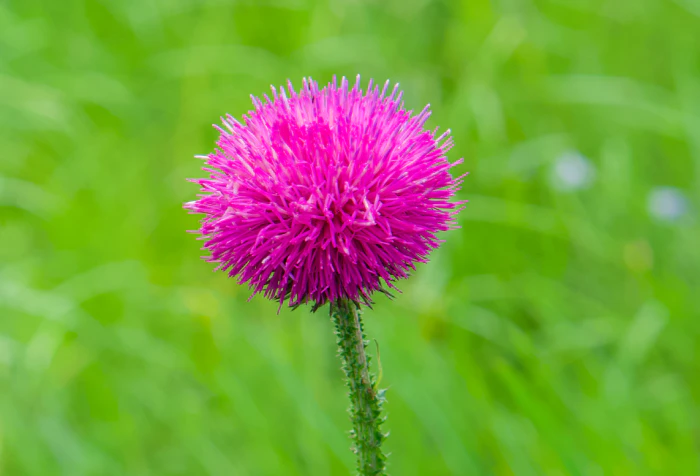Elbowed Thistle
(Carduus hamulosus)
Elbowed Thistle (Carduus hamulosus)
/
/

© Conrad Altmann
CC BY 4.0
Image By:
© Conrad Altmann
Recorded By:
Copyright:
CC BY 4.0
Copyright Notice:
Photo by: © Conrad Altmann | License Type: CC BY 4.0 | License URL: http://creativecommons.org/licenses/by/4.0/ | Uploader: conradaltmann | Publisher: iNaturalist |


















Estimated Native Range
Climate Requirements for West Springfield, Virginia
| This Plant | Your Site | Plant Suitability for Your Location | ||
|---|---|---|---|---|
| • Precipitation | 19" - 29" | 41" | Your precipitation may be too high for this plant. | Too high |
| • High Temp. | 74°F - 84°F | 88°F | Your summer temperatures are normal for this plant. | Excellent |
| • Low Temp. | 9°F - 29°F | 25°F | Your winter temperatures are normal for this plant | Excellent |
Your location may be too wet for this plant.
Summary
Carduus hamulosus, commonly known as Elbowed Thistle or Hooked Thistle, is a biennial herbaceous plant native to Europe and West Asia. It thrives in a variety of habitats including grasslands, open woodlands, and disturbed areas, often preferring calcareous clay soils. This plant typically grows at a moderate rate to a height of 2-4 feet (0.6-1.2 meters) and a width of 1.5-2 feet (0.5-0.6 meters). The Elbowed Thistle is characterized by its spiny, winged stems and deeply lobed leaves. It produces purple flower heads that bloom in the summer and are attractive to pollinators such as bees and butterflies. The flowers are surrounded by spiny bracts that give the plant its common name.
Elbowed Thistle is not commonly cultivated due to its spiny nature and potential invasiveness. However, it can be used in wildflower meadows or naturalistic plantings where its ability to attract pollinators is beneficial. It requires full sun exposure and can tolerate a range of soil types, including medium or fast-draining clay or loam soils, with medium water requirements. While not typically grown in gardens, it can be considered for ecological restoration projects. Gardeners should be cautious as Carduus hamulosus can be potentially invasive outside its native range and may outcompete native vegetation.CC BY-SA 4.0
Elbowed Thistle is not commonly cultivated due to its spiny nature and potential invasiveness. However, it can be used in wildflower meadows or naturalistic plantings where its ability to attract pollinators is beneficial. It requires full sun exposure and can tolerate a range of soil types, including medium or fast-draining clay or loam soils, with medium water requirements. While not typically grown in gardens, it can be considered for ecological restoration projects. Gardeners should be cautious as Carduus hamulosus can be potentially invasive outside its native range and may outcompete native vegetation.CC BY-SA 4.0
Plant Description
- Plant Type: Herb
- Height: 2-4 feet
- Width: 1.5-2 feet
- Growth Rate: Moderate
- Flower Color: Purple
- Flowering Season: Summer
- Leaf Retention: Deciduous
Growth Requirements
- Sun: Full Sun
- Water: Medium
- Drainage: Medium, Fast
Common Uses
Bee Garden, Butterfly Garden, Erosion Control
Natural Habitat
Native to grasslands, open woodlands, and disturbed areas, often in calcareous clay soils
Other Names
Common Names: Hooked Thistle
Scientific Names: Carduus hamulosus, Carduus hamulosus var. hamulosus
GBIF Accepted Name: Carduus hamulosus